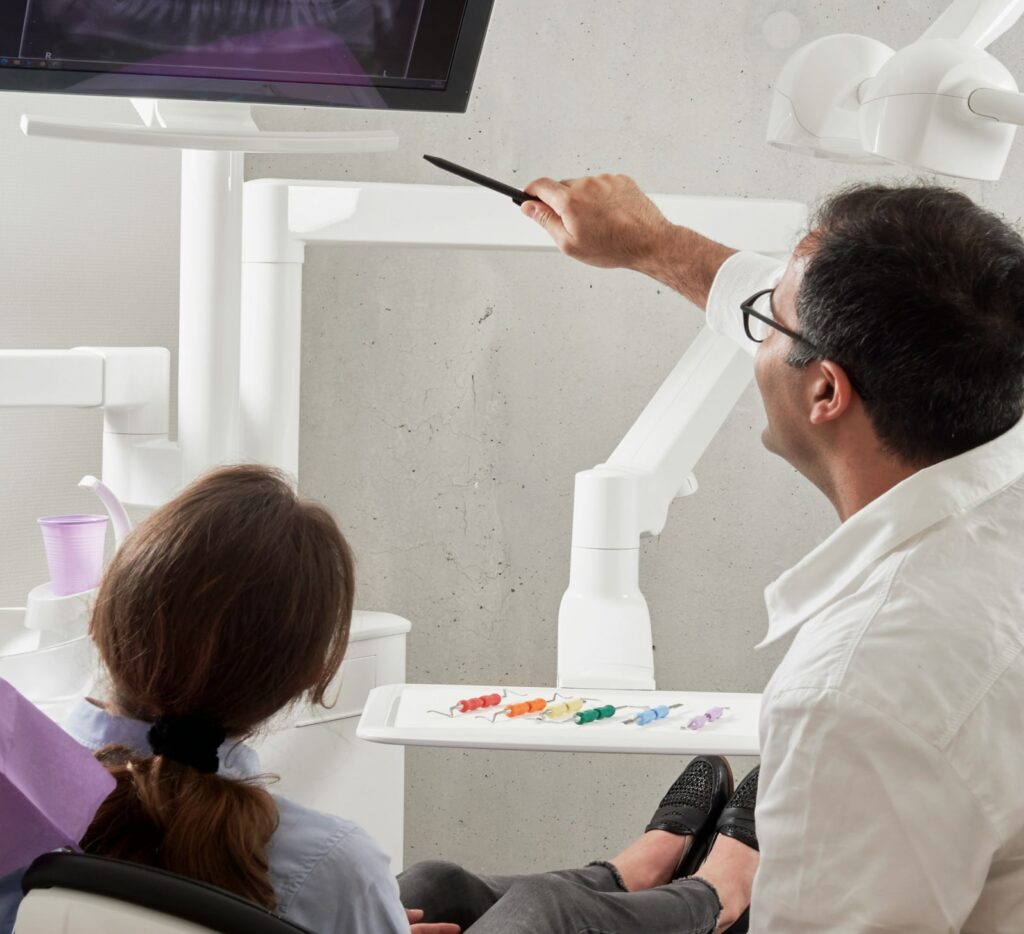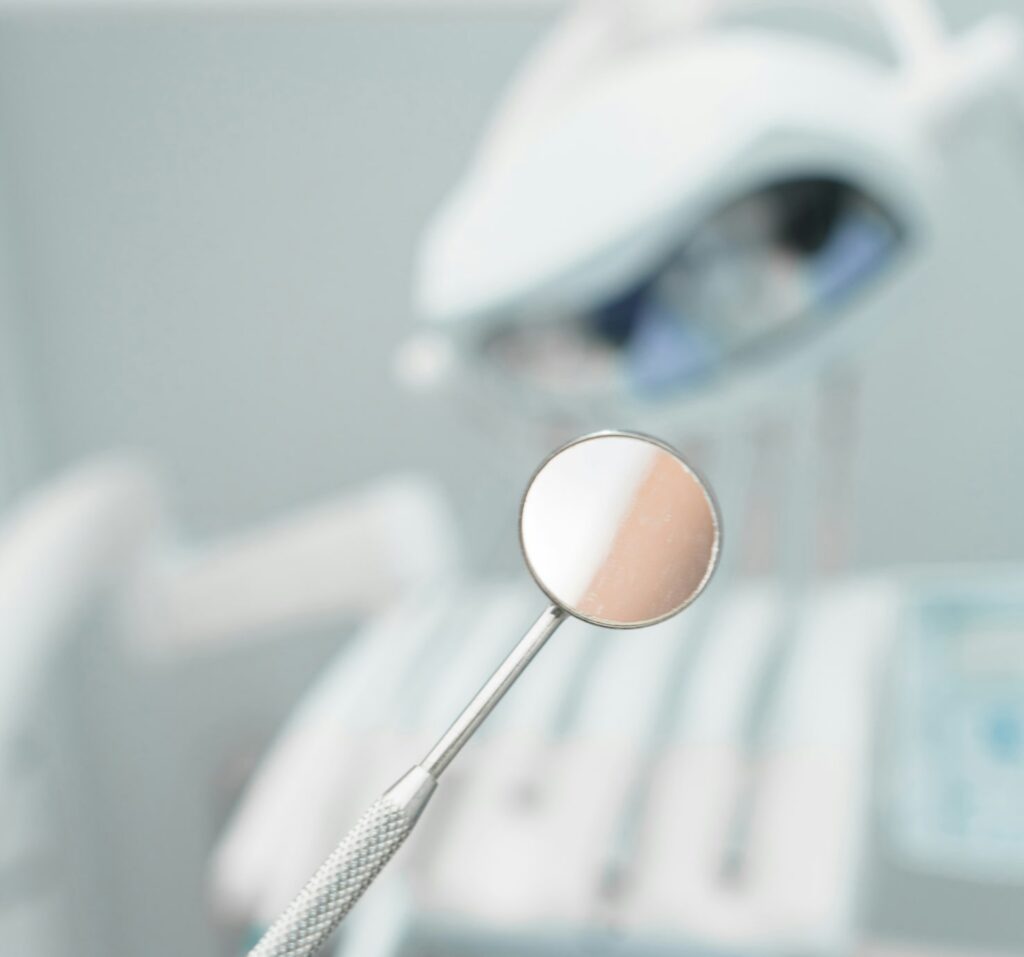Preventing periodontal disease
Periodontal disease is a common condition that can lead to serious oral health problems such as tooth loosening, infection and chronic inflammation. Prevention aims to maintain the tissues that support the teeth (bone, gums, fibers) and avoid their deterioration. To prevent these diseases, good oral hygiene and regular check-ups are essential. Regular support is essential for long-term oral health.
The main cause of periodontal disease is plaque accumulation, but other causes such as smoking and certain systemic diseases can also play a part. Proper tooth brushing is essential to prevent inflammation and loss of supporting tissue. Regular follow-up, particularly by the dental hygienist, is essential for education, professional cleaning and prevention of recurrence. Prevention and follow-up must be tailored to the specific needs of each patient to ensure their well-being.

What is periodontal disease?
Periodontal disease is caused by bacterial infections that affect and destroy the supporting tissues around one or more teeth. Periodontium refers to the tissues that support the teeth: gingiva, alveolar bone, periodontal ligament and cementum. These pathologies evolve slowly over several years and are often caused by the stagnation of bacteria in dental plaque. Over time, this plaque generates an inflammatory reaction that leads to the progressive degradation of the gums and underlying bone, resulting in the destruction of bone and gum tissue: this is known as “tooth loosening”. Inflammation of the gums (gingivitis) is an immune response to the accumulation of bacterial plaque and, if left untreated, can progress to more serious forms such as periodontitis. Destruction of the periodontium can lead to tooth loss if left untreated. Inflammation is the body’s reaction to bacterial infection.
Periodontal disease, such as gingivitis or periodontitis, can affect one or more teeth, and in more serious cases, the whole dentition. These diseases generally appear around the age of 30, with gradual onset and often mild symptoms at first. More rarely, such diseases can occur in younger people: this is known as juvenile periodontitis.

Early diagnosis is important to assess prognosis and guide treatment. Treatments available include non-surgical treatment (scaling, surfacing), surgical treatment (surgery, tissue regeneration), with the choice depending on the stage of the disease. Treatment of periodontitis takes place in several phases or stages, including reassessment after each phase to adjust management. The disease has many causes (bacteria, genetic factors, hygiene, smoking, etc.) and its scientific name depends on the extent of the lesions. In complex cases, a specialist such as a periodontist may be consulted; periodontology is the specialty dedicated to these diseases. Modern techniques include tissue regeneration, surgery, grafts and the use of biomaterials. Certain aesthetic or functional defects may appear, requiring specific treatments.
Removing plaque and tartar deposits from tooth surfaces, especially between teeth, using fine-tipped instruments, is essential to prevent disease progression. Regular reassessment enables treatment to be adapted and undesirable side effects to be avoided. There is also a link between periodontitis and the risk of stroke. People with periodontal disease are at increased risk of stroke, underscoring the importance of prevention and regular follow-up.
Tooth loss can be compensated for by implant placement, with implants playing a key role in functional and aesthetic rehabilitation, thanks in particular to modern techniques such as All-On-Four, but they can also be subject to complications such as peri-implantitis. Dental implants are used to replace missing teeth and restore masticatory function and aesthetics; rigorous follow-up and hygiene are essential to prevent infection around implants.
Scaling and surfacing are non-surgical treatment techniques, while surgery may be necessary in some advanced cases.

Periodontitis treatment: methods and protocols
The treatment of periodontitis is based on individualized care, tailored to the severity of the periodontal disease and the specific needs of each patient. Once a diagnosis has been made, the team of specialists draws up a customized treatment protocol designed to halt the progression of the disease and preserve the health of the tissues supporting the teeth.
The first step in treating periodontitis is usually to eliminate the causes of inflammation, notably the presence of bacteria and deposits under the gums. Depending on the course of the disease, different methods may be proposed. For early or moderate forms, non-surgical treatment is preferred: this involves thorough cleaning of tooth surfaces and roots, to reduce infection and promote tissue healing. This protocol may include the use of antiseptic mouthwashes or local antibiotics, depending on the patient’s needs.
In more advanced cases, where tissue destruction is extensive, surgical treatment may be required. These procedures aim to access areas deep beneath the gum, remove periodontal pockets and regenerate lost tissue using tissue regeneration techniques. The choice of method depends on the extent of damage, the presence of bone defects and the patient’s response to initial treatment.
Throughout the treatment of periodontitis, regular reassessment is essential to adjust the protocol and ensure effective care. The aim is to achieve lasting stabilization of the disease, taking into account the patient’s individual needs and lifestyle. Personalized support and rigorous follow-up help optimize the prognosis and ensure long-term oral well-being.
How does a periodontal treatment work?
First, a clinical check-up is carried out to assess the condition of the gum tissue. At this stage, we look for the presence of plaque or tartar, as well as any periodontal pockets or recessions (pockets of tartar under the gums). This preliminary examination enables us to take stock of the situation and, in time, to compare the evolution of the situation during future check-ups.
During the first treatment session, a non-surgical treatment is performed, including scaling and root planing, sometimes under local anaesthetic, to thoroughly remove tartar. The dental hygienist uses fine-tipped instruments to clean tooth surfaces, particularly between the teeth, to remove the plaque and tartar deposits responsible for inflammation. A thorough cleaning of tooth surfaces is also performed during each session to eliminate the bacterial build-up responsible for inflammation. After the treatment, a proper brushing technique is recommended to limit inflammation and prevent deposits from reappearing. This treatment generally does not require anesthesia. At the same time, oral hygiene advice is provided to optimize daily care and space out treatment sessions as far as possible.

Treatment may involve several phases or stages, with reassessment at each stage to adapt the protocol to the patient’s specific needs. Several sessions can be scheduled at regular intervals to ensure rigorous follow-up. The frequency of treatment is tailored to each patient, depending on their oral and general health. People suffering from chronic illnesses such as diabetes, for example, are more regularly monitored, as this disease affects the stability of periodontal tissues.
If non-surgical treatment is not sufficient, surgical treatment may be considered, particularly to regenerate the supporting tissue around the teeth. In fact, a detailed assessment of periodontal condition is carried out at regular intervals, usually every two years, to detect any unfavorable evolution and adapt care accordingly. Finally, side effects such as tooth sensitivity or gingival retraction can occur, hence the importance of personalized support and follow-up by the dental hygienist to maintain long-term oral health.
What is the recommended frequency of maintenance sessions?
For patients with periodontal disease, the frequency of treatment is usually two to four times a year. Periodontal maintenance maintains the supporting tissues of the teeth and prevents recurrence. The dental hygienist plays a key role in supporting and regularly monitoring patients, performing cleaning sessions and reinforcing oral hygiene. This follow-up depends on a number of patient-specific factors, including the prognosis established during the initial assessment, and is based on clinical examination. The frequency of sessions is adapted according to prognosis and individual needs, with regular reassessment to adjust the maintenance protocol.
